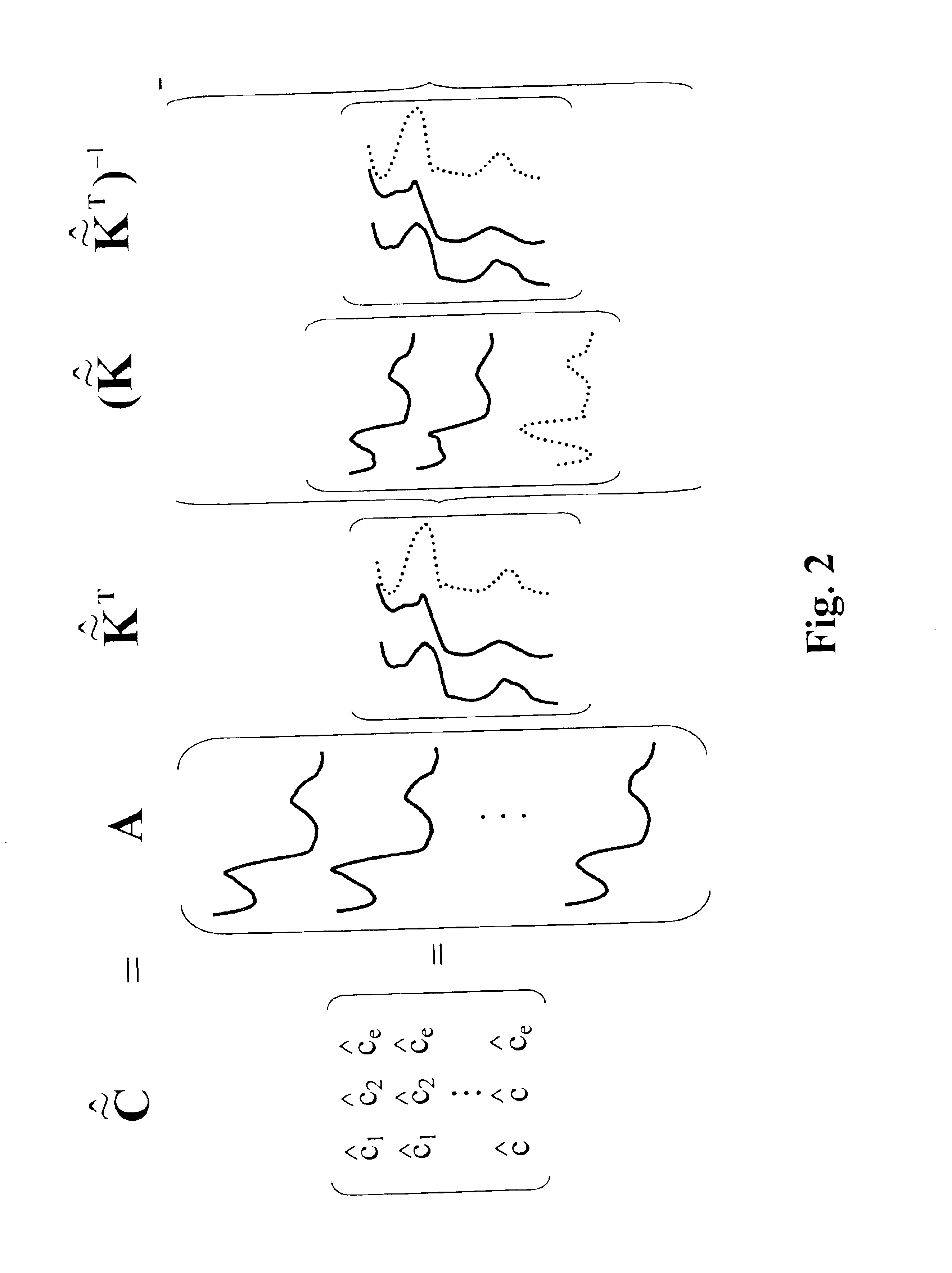Augmented classical least squares multivariate spectral analysis
a multi-variate spectral analysis and classical least squares technology, applied in the field of multi-variate spectral analysis, can solve the problems of not having the qualitative capabilities of cls, pcr and pls, and not being well suited to the advantages of a newly developed prediction-augmented cls, so as to achieve accurate and precise prediction models.
- Summary
- Abstract
- Description
- Claims
- Application Information
AI Technical Summary
Benefits of technology
Problems solved by technology
Method used
Image
Examples
example 1
CRACLS Method Applied to the Analysis of Non-Imaging Data
The CRACLS method of the present invention is demonstrated with both simulated and real data derived from a system of dilute aqueous solutions containing glucose, ethanol, and urea. The simulated data demonstrate the effectiveness of the CRACLS algorithm and help to elucidate the principles behind the method. Using experimental data, the prediction abilities of CRACLS and PLS are compared during cross-validated calibration. In combination with PACLS, the CRACLS predictions are comparable to PLS for the prediction of the glucose, ethanol, and urea components for validation samples collected when significant instrument drift was also present.
The experimental samples consisted of a series of dilute aqueous solutions of glucose, ethanol, and urea each independently varied over the concentration range of 0-500 mg / dL. The samples were prepared by weight and volume in a pseudo D-optimal design that allowed each of the three analytes ...
example 2
ACLS Method Applied to the Analysis of Hyperspectral Image Data
Multivariate methods use a large number of spectral channels to take advantage of the signal averaging and resolving power inherent in spectral data. The multivariate nature of the spectra and the massive amount of data in hyperspectral images allow the characterization of systems with low signal-to-noise ratios and with multiple components whose spectral features overlap. Multivariate data also provide the opportunity to correct systematic spectral artifacts and aberrations introduced by the imaging instrument.
The quantitative analysis of hyperspectral image data collected from FT-IR imaging systems that employ focal plane array (FPA) detectors can be greatly hampered by the presence of system artifacts in the spectral and image data. Methods are required to eliminate the detrimental effects of these systematic artifacts if they cannot be eliminated experimentally. The characteristics of the systematic artifacts can be ...
PUM
| Property | Measurement | Unit |
|---|---|---|
| spectral error covariance EA | aaaaa | aaaaa |
| EA | aaaaa | aaaaa |
| spectra | aaaaa | aaaaa |
Abstract
Description
Claims
Application Information
 Login to View More
Login to View More - R&D
- Intellectual Property
- Life Sciences
- Materials
- Tech Scout
- Unparalleled Data Quality
- Higher Quality Content
- 60% Fewer Hallucinations
Browse by: Latest US Patents, China's latest patents, Technical Efficacy Thesaurus, Application Domain, Technology Topic, Popular Technical Reports.
© 2025 PatSnap. All rights reserved.Legal|Privacy policy|Modern Slavery Act Transparency Statement|Sitemap|About US| Contact US: help@patsnap.com



